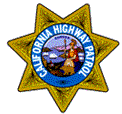

CALIFORNIA HIGHWAY PATROL
MOTORCYCLE RADIO SYSTEMS
PART TWO
THE MOTOROLA TWIN-V RADIOS, 1956-64
During late 1954-55 the CHP began to purchase a quantity of what were referred to as "Research Line" motorcycle radios to supplement the main fleet of failure-prone Avia equipment. The Research radios contained the transmitter, receiver and power supply chassis of the regular 25 Watt car mobile radios, except in two separate "tubs" on either side of the motorcycle rear fender and set to a power output of about 10 Watts. These radios were much more reliable than the Avia equipment and led to the purchase of the Twin-V Motorola motorcycle radios, which were essentially the same equipment as the Research except with different accessories (control heads) and slightly newer circuitry. Note that the microphone does not connect to the control head but instead has its own cable coming from the radio tub area, and a "claw" style holder mounted on the fuel tank.
"Research" Motorcycle Radio:
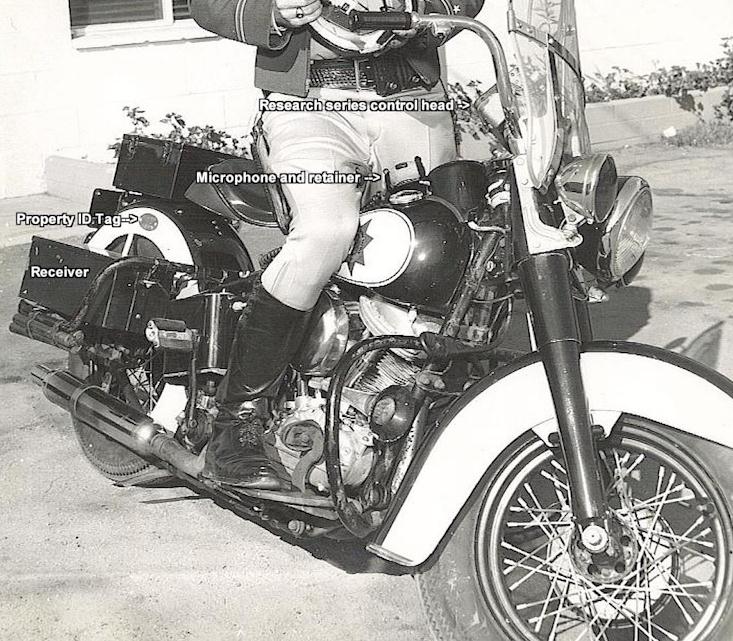
By summer 1956, many of the Avias had been replaced by both the Research M31-1 radios and the later M31GGV "Twin-V" motorcycle radio, which was essentially the same radio as the Research Line described above, and superseded it. The Motorola radios, which used miniature tubes (as did the Avia) were very successful and maintenance down-time intervals were reduced to approximately 10 months. The Research and Twin-V radios were two channel transmit, single channel receive, carrier squelch 6 volt units rated at 10 Watts transmitter output.
Motorola made no attempt to "ruggedize" the receiver and transmitter chassis on these radios, leading one to wonder why the Avia was so despised when the design was all not that different. Curiously, the "Twin-V" name, which referred to either 6 or 12 volt battery capability, was a misnomer for this radio, which was for 6 volt systems only, although a few still in use were modified for 12 Volts by CHP when Harley Davidson changed motorcycle power systems to 12 Volts. This was probably because there were no 12 volt motorcycles in existence in 1956 and no manufacturer planned to produce any in the near future. These radios still required a relatively large current drain from the battery and could not be left turned on without the engine running for any period exceeding a few minutes, even with the transmitter turned "off." Dead batteries on motorcycles in service were a problem for traffic officers during this era.
The Twin-V equipment moved the microphone to the handlebar location (see photo) and connected it to the control head rather than the control cable.
It is presumed that all, or at least the majority of these radios, were gone by 1966, although there may have been an isolated few still in service after that date. The Research radio of this model was produced approximately from 1953-1955, while the Twin-V was available from late 1955-late 1962.
It is believed that CHP bought all the Twin-V cycle radios it used, in a single 1955 dated Contract filled late that year.
Twin-V Motorcycle Radio:
NOTE CONCERNING THE ABOVE PHOTO: The key switch turns power on/off to the radio. The toggle switch is the "standby" switch which turns off the transmitter tube filaments to save battery power during periods when no transmitting is anticipated. The toggle switch is actually located above the key switch, not next to it as in this photo. Evidently Motorola used the photo of the earlier Research model motorcycle radio housing without anyone catching the difference, which is common in their publications from this era.
Oddly, it appears that sometime after 1956 the CHP began mounting the Twin-V motorcycle radios on the opposite, "backwards" side from the above diagram. In other words, the "wrong" side. It is not known why, and as the cables then exit on the outside walls of the box, must have been peculiar. If you have any idea why, please let me know! I have been told that apparently the Harley Davidson frame system and fork arrangement was changed in the late 1950's, and possibly the only way to make these boxes fit was by reversing the positions. The small photo below shows such an example, and appears to date from approximately 1959-62. It is erroneously described as a 1964 photo in the AAA magazine in which it recently appeared, which can not be correct since the license plates on the cycles are 1956 series, which were discontinued in 1963. The box shown on top of the fender is a first aid kit and flare storage box.
Photo
credit AAA of Southern California
Photo below is of an actual CHP Twin-V control head as removed in 1966 from a Los Angeles office cycle. Note that the knobs, curiously, are black rather than the standard white, and that they have a sort of tension-lock nut on them which is not featured on the normal "Twin-V" era control heads.
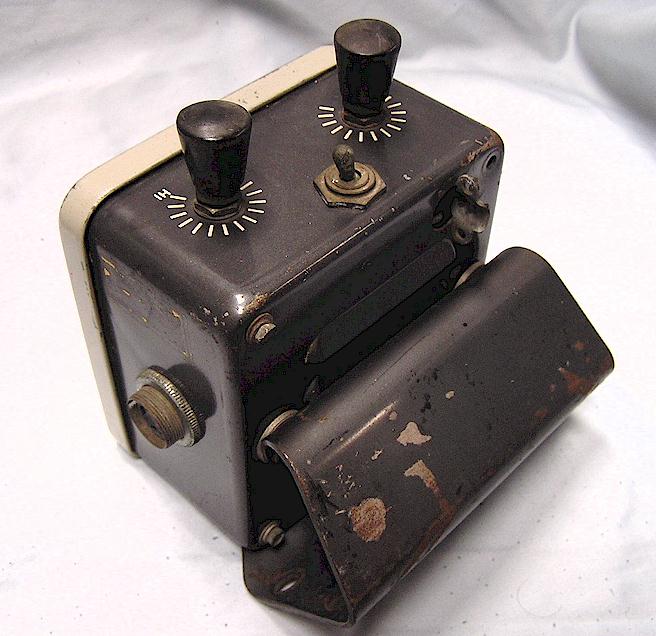
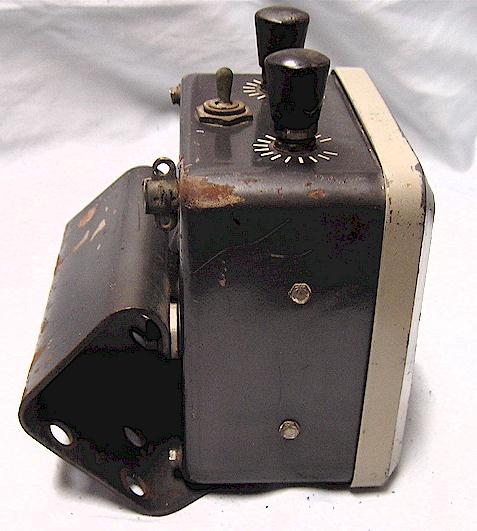
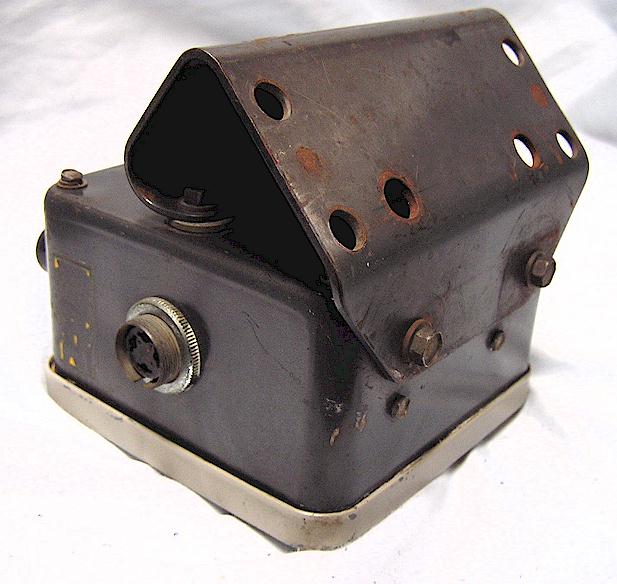
Note that there is a single cable which exits on the rear right top corner, and that the On-OFF switch is on the transmitter-power supply box at the rider's left, controlled by a key. The microphone did not hang up on the control head as it did in the later Transistorized Dispatcher models.
Shown below is another version of the above head, interestingly without the black knobs and without the lock nuts under them. The yellow CHP property decal (the "R" number") was used from about 1950-1964. Apparently the yellow decals were used on the control heads as well as the radio "drawer" sections. Some time after 1964 the decals were superseded by a yellow paper tag, the "KA4993" metallized foil callsign decal appeared on control heads rather than the yellow decals, and it appears that control heads were no longer carried as separate capital equipment inventory numbers. Note that the small white switch and the cable are not original and added later by someone.
THE MOTOROLA "TRANSISTORIZED DISPATCHER RADIOS," 1958-77
Some of the" Twin-V" motorcycle radios were experimentally replaced in approximately early 1958 by the new Motorola "Transistorized Dispatcher" hybrid motorcycle radios, a one-piece set which made extensive use of transistors and which was shock-mounted within a hard shell weather housing, usually over the rear fender, rather than in boxes at the saddlebag areas. Those sets were model T31-1-PH50 and were otherwise of the same power level and features as the older Twin-V radios, except for dramatically lower battery power consumption and extremely high reliability. These sets are generally referred to as "Motorcycle Dispatchers." Officers and technicians were ecstatic with the performance of these radios and squabbles often broke out over seniority as to who was to have the transistorized radio equipped cycles! These first generation Transistorized Dispatchers were slightly different than the ones shown below, in that until approximately late 1959, there was no microphone hang-up assembly on the left side of the control head, and the microphones were the same rounded style as shown on the "Twin-V" vacuum tube radios above. The Transistorized Dispatchers were an extremely successful and reliable product, and were made over an eleven year period and were used worldwide. They are probably the most recognized police motorcycle radio and were used in one model or another by CHP for over twenty years. This would have been a record, except that the GE Range mobile radios still in service as of 2010 have been in service since 1988!
Name Confusion: The Transistorized Dispatcher name was an example of Motorola's attempt to advertise something revolutionary before it actually existed, in this case using the vague term "Transistorized." The Dispatcher shown here was not fully transistorized, and no models of this type ever were. The receivers were initially fully transistorized except for two pencil-style subminiature tubes on the foil side of the circuit board. By the time of the "B" series receivers, they were indeed fully transistorized. The transmitters were never even close to being fully transistorized After the microphone amplifier the transmitters used a row of subminiature wire lead tubes on the underside of the exciter circuit board and a 2E24 "instant heating" version of a 2E26 power amplifier tube. By 1966 Motorola had finally offered a fully transistorized motorcycle radio, which partially used circuit boards from the HT-200 portable radios, but they now called that radio the "Solid State Dispatcher." The Solid State Dispatcher was nevr used by CHP and I do not believe offered in a VHF low band model.
Note that the photo below should say that the CHP T31BAT versions had the all black control heads. The earliest heads were two-tone as shown, and used on the T31-1 and early T31AAT series. The pilot lamp shown in the photo was eliminated somewhere between prototype and full production. There were several control head styles. The first Transistorized Dispatchers had a two tone dark gray and cream-gray control head with no microphone hang-up clip on the side and the cables exited the rear. Models T31-1. Almost immediately after those were in production, the head color for the CHP order changed to all black with an all black microphone, still with cables out the rear (as in photos of CHP officers below from 1958 and 1958-62.) By the time of the T31AAT model, the cable exited the side (as directly below) with a microphone clip at that spot and the control head was fairly soon after switched to all black. The T31BAT versions were the same.
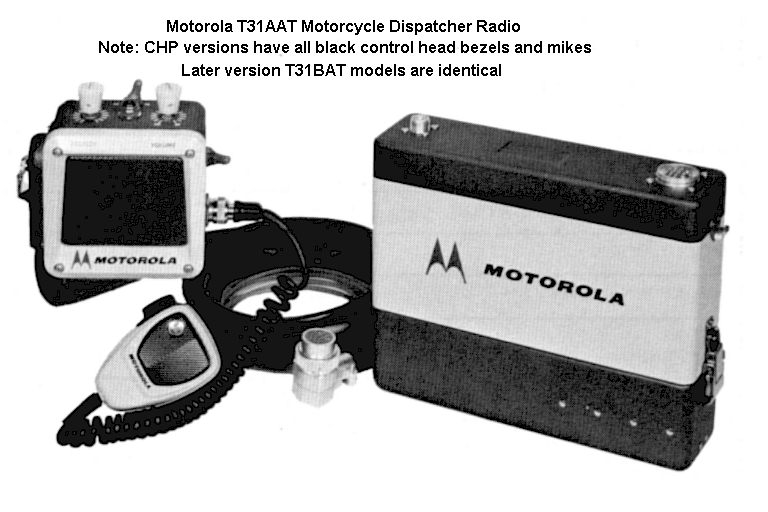
FIRST GENERATION NU-181 CONTROL HEAD
Note that this original design control head for the Transistorized Dispatcher has the bezel mounting screws coming in from the rear and is a two-tone paint design, The versions following this would have Phillips head screws holding the bezel from the front and at some point after 1962 were painted all black, as was the microphone. The microphone housing on all Transistorized Dispatchers was a die cast pot metal assembly, painted, while replacement parts by approximately 1967 were all plastic witha supersede type part number. The concept of a red lamp on top of the head for a transmit indicator was initially tried but rather quickly abandoned; note the plug button in the hole where it would have been. This head would not have originally had the microphone holder on the side. The cables on this model exited out the rear rather than the side. Someone has put the microphone holder and cable cover onto this one on the left side from a scrap later model head, hence the gloss black color. The later model heads were originally two-tone color and had the microphone holder and cable exit on the left side, but rather quickly changed to all black color.
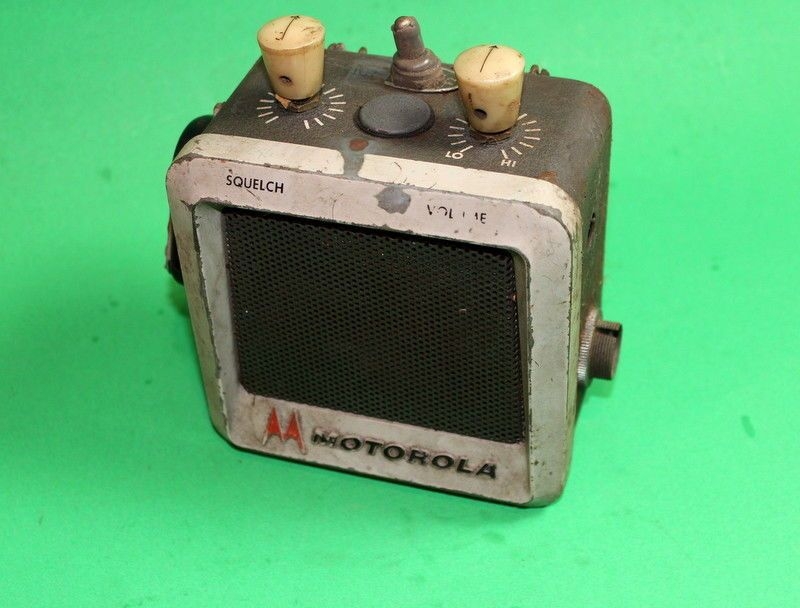
Photo below shows an early first generation T31-1 Series radio installation with the NU 181 head above. Note the antenna was the style using the loading coil inside a small steel box with porcelain insulator, and this was the version with the soft vinyl cover over the radio mounting tray rather than the hard metal box as shown above and elsewhere. The "soft" cover is rare and few were so equipped. The T31-1 also had the original two-tone gray color scheme on the control head housing, unlike the (late) AAT and BAT series radios which used all black control heads. The photo below should date from early 1958.
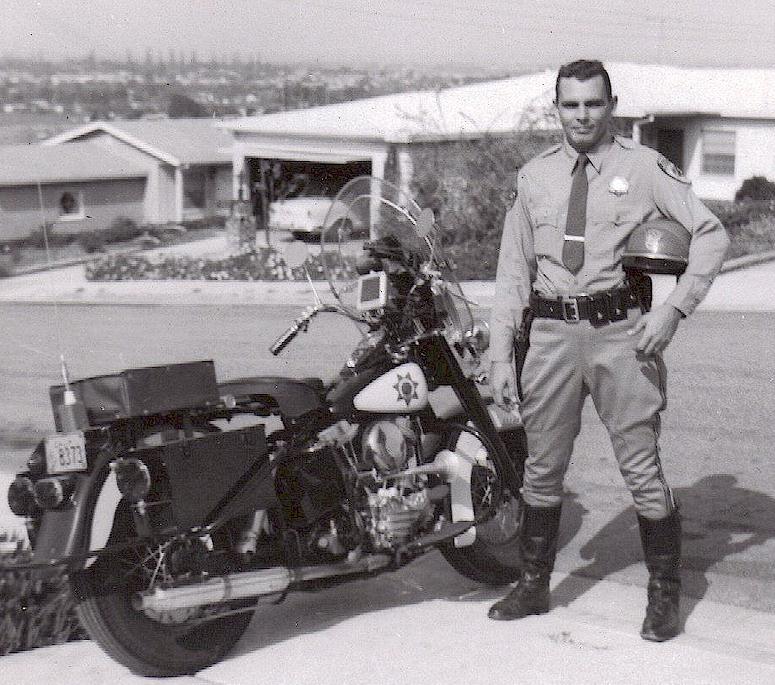
The photo below appears to also date from 1958, as the year sticker on the car license plate is so marked. Probably late summer. This is an example of one of the first T31AAT series motorcycle radios installed, or a very-last-production T31-1. Note that the microphone is still mounted on the handlebars rather than the left side of the control head, but that the head is already black and that the weather cover on the radio is a steel box rather than the vinyl "soft" cover.
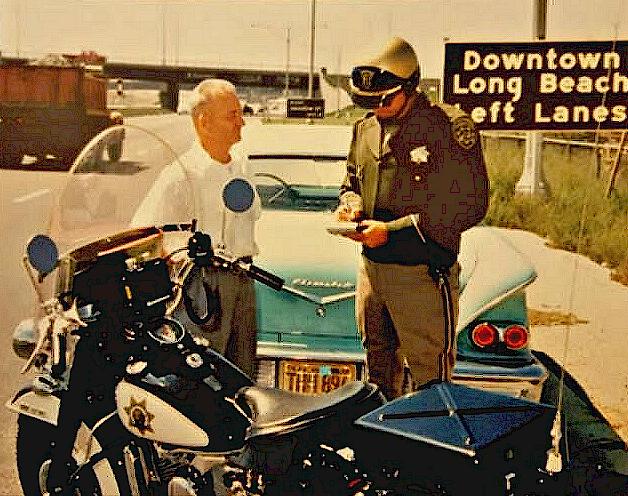
Another photo from the same time period, probably between 1958-61:
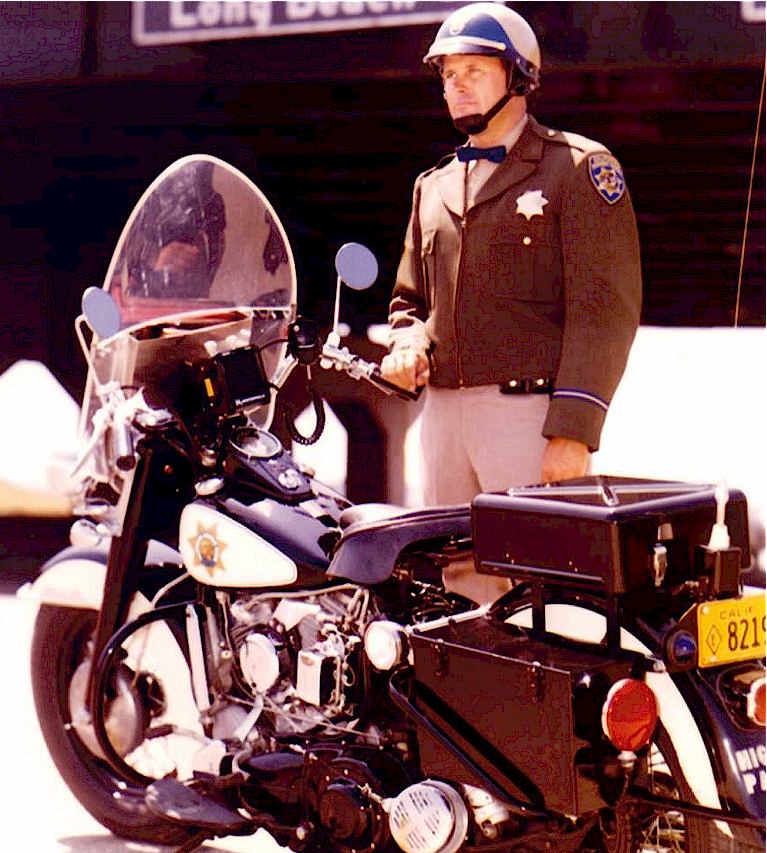
Shown below is the later (post 1963 +/-) method which the CHP antenna was mounted. The cylinder is an epoxy loading coil used to shorten the whip length. There are female 3/8-24 threads on either end of the epoxy cylindrical load coil.
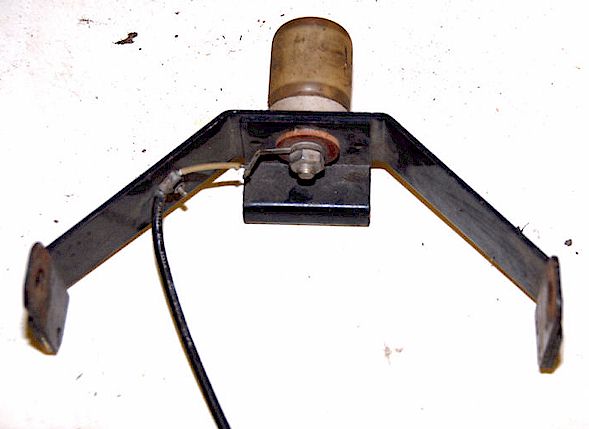
This is the standard weather housing box as used by CHP on the Transistorized Dispatchers:
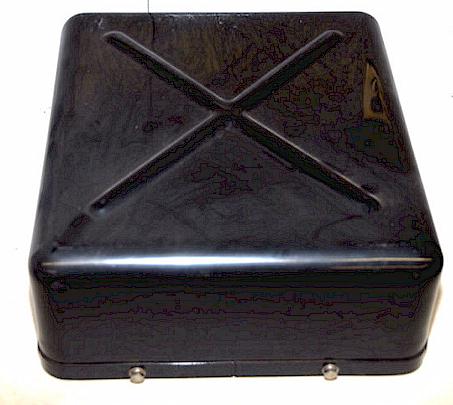
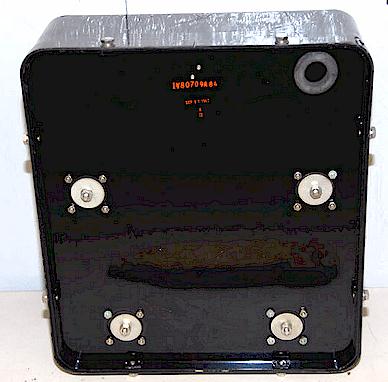
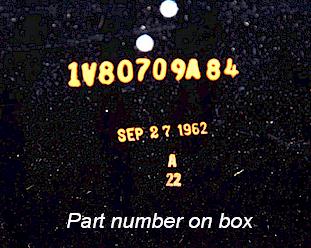
Undated photo from early or mid 1960's below. I
couldn't figure out what the deal was with the tailpipe, but thanks to Chris
Haynes, I was informed that the tailpipe extension should have been on most or
all of this model motorcycle so that it would not jam up on the curb when backed
against it. Chris says he believes this photo was taken behind Santa
Monica Harley Davidson, where the West Los Angeles Div. motorcycles were
serviced. 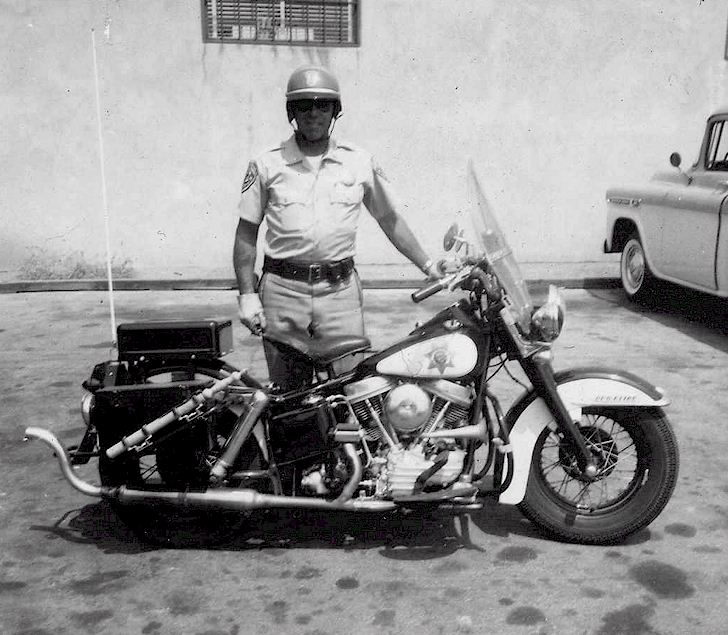
Most of us will recognize this guy, undated photo probably from approximately 1962. Especially unusual is the Civil Defense decal on the windshield, usually seen on the windshields of U.S. Mail trucks in the 1960's and which generally indicated that the vehicle was purchased using federal grant money. Note the two-tone paint on the radio head, suggesting the radio is the first generation T31-1 PH50 series Transistorized Dispatcher, with the cables exiting the rear of the head. This version uses the metal radio weather cover.
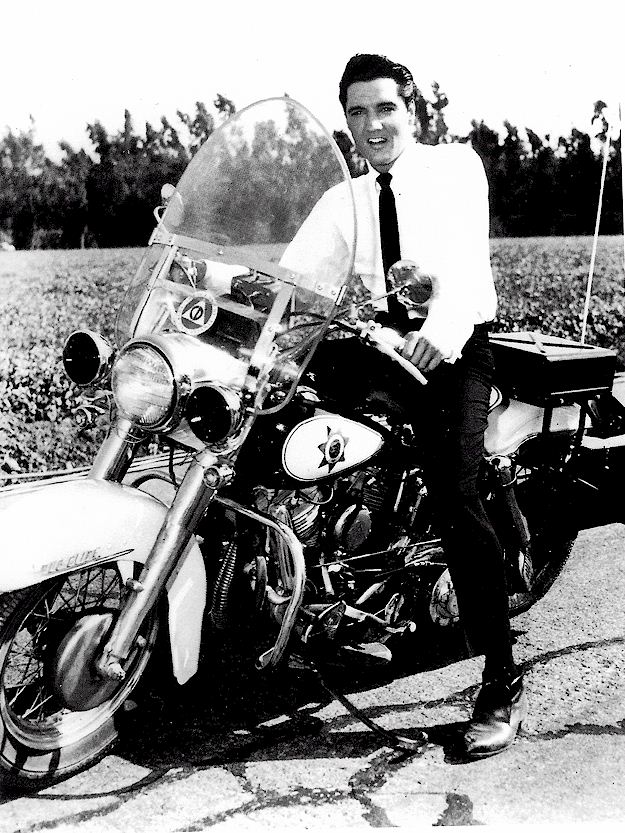
In approximately March 1960, more of the remaining Twin-V motorcycle radios were replaced by the newer Transistorized Dispatcher sets, model T31AAT-1114A, but all three types remained in service through at least 1965. Motorola began changing model numbers in 1958, hence the different nomenclature. The fleet of remaining older equipment was converted to "narrow band" operation (5 KHz FM deviation) in 1962-63 and many if not most of the M31GGV "Twin-V" two piece radios were surplused out or stored at that time. The fleet was updated on an almost continuous basis through 1967, starting in April 1962 by the T31BAT-3140A-SP1 version, essentially the same radio but with an all solid state receiver section and now with "Private Line" tone squelch, and in early 1965 CHP took delivery of a quantity of the T31BAT-3100B-SP3 version as well. The -SP3 version featured two transmit and one receive channels, with "PL" operation. Unlike the Twin-V radios, the "Dispatcher" series used "instant heating" tubes in the transmitter, which required waiting approximately one to two seconds after pressing the push-to-talk switch on the microphone before the transmitter would be putting out power.
1965 PURCHASE ORDER, THE LAST OF THE TRANSISTORIZED DISPATCHERS
Most of the T31BAT series and the previous Motorola Transistorized Dispatcher models were eventually supplemented by a later and final version, starting in perhaps 1966, apparently the last major order for Motorola of this already obsolete equipment. This last model, Z31BAT-3190A was a special model made specifically for the CHP. The essential difference of this last set compared to the "T31" model was the addition of a 5 position single-tone "burst tone" selector switch and a 4 frequency S-C-S-C "car to station" and "car to car" switch so that the motorcycle radios offered the same features as the car installations. In other words, two receive channels and four transmit channels. This last Z31BAT was a 12 Volt radio, because Harley Davidson made the changeover to 12 Volts in 1965. The remaining few T31 model radios were eventually converted to 12 volt operation, as the new motorcycles began to be placed in service, and it is believed that all of the 1955 vintage M31GGV "Twin-V" radios were scrapped by 1967.
All of the Dispatcher radios and anything else older were pulled from service beginning in 1977 as the motorcycles they were on were "run out." This took several years, with everything being replaced by a standardized radio, the custom "Maxar" dual chassis radio made only for CHP shown on the next page. It is believed that nearly all of the Dispatcher radios were gone by 1980.
Oddly, hardly any, if any at all, of these last radios have survived. If anyone knows what happened to them all, let me know! I suspect, sadly, they were taken in on trade by Motorola and destroyed in the 1977-1980 time frame.
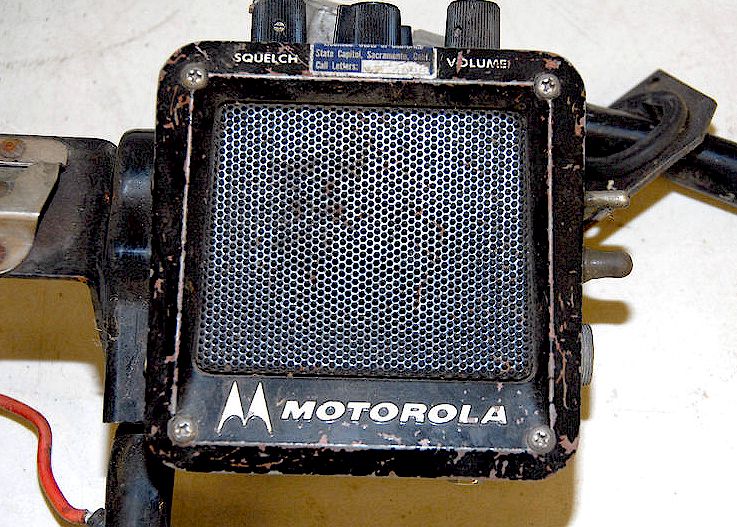
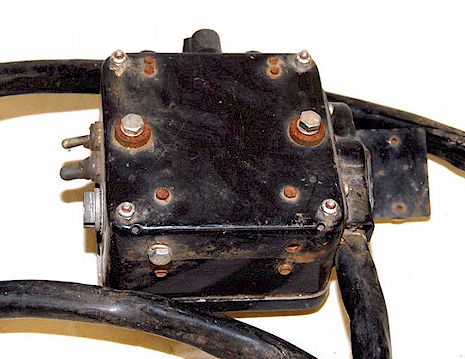
Note that the housing for this model appears the same as that of the predecessors back to 1958. Apparently the extra 2 transmit frequencies (and PL) were able to fit inside somehow. The 5-tone burst oscillator was solid state and believed to be inside the control head.
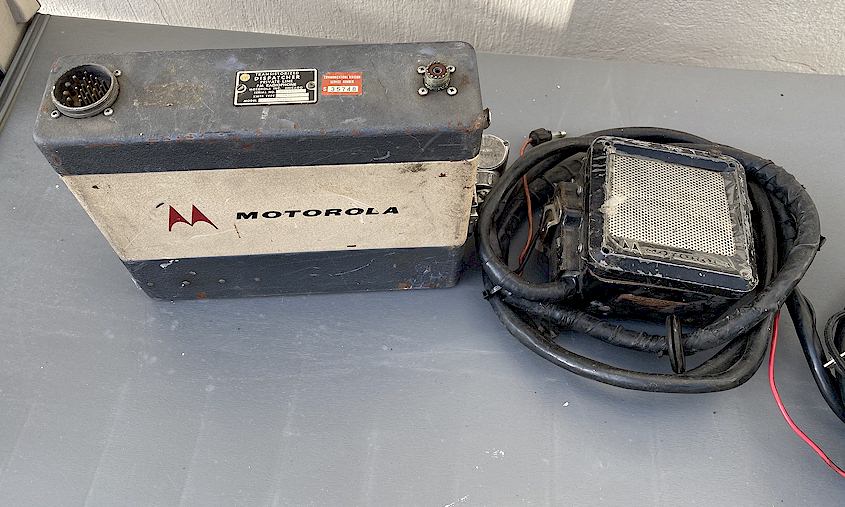
The two photos above and below courtesy of Al Wong
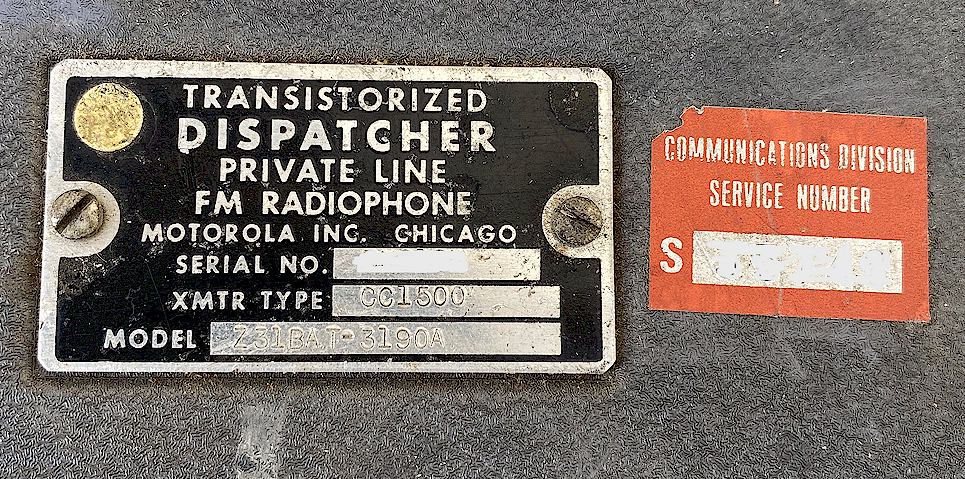
The photo below shows Telecommunications Technician David Wisniewski in spring of 1979 at the Central Los Angeles CHP office, where some of the TV series "CHiPs" episodes were filmed. Notice that the motorcycle still has the last generation Transistorized Dispatcher radio mounted, as in the control head photo above. Central Los Angeles was still using the older radios until the motorcycles they were mounted on were retired.
Photo courtesy David Wisniewski, K6GBB
The photo below from 1969 shows the rear of this version control head on a CHP Harley Davidson cycle in the Los Angeles office:

Another, circa 1967, showing the same equipment on the road near Los Angeles:
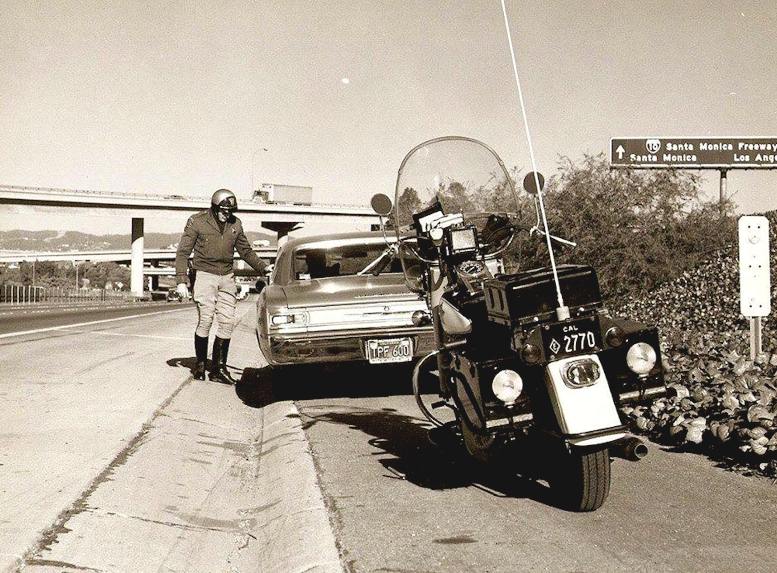
Ver. 8/05/2024 ęGeoffrey C. Fors 1998 All rights reserved